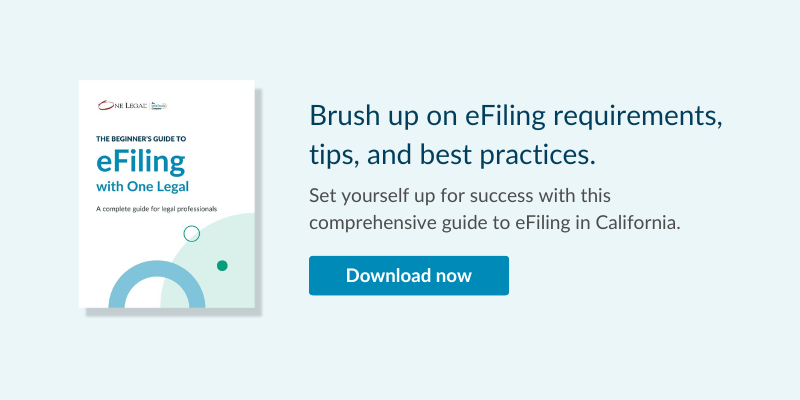A conflict of interest checklist for lawyers can be a life(career)-saver. Avoiding conflicts of interest is a cornerstone of legal ethics and professional responsibility.
This shouldn’t surprise anyone, since the integrity of the legal profession is founded on the trust that clients place in their attorneys to represent their interests faithfully and without compromise.
Importantly, the ethics rules surrounding conflicts of interest create a duty owed to both current and former clients.
Specifically, American Bar Association (ABA) Model Rules of Professional Conduct (Rule 1.7 and Rule 1.9), detail the importance of avoiding conflicts of interest, including those arising from concurrent or successive representations.
The Rules of Professional Conduct of the State Bar of California (again, Rule 1.7 and Rule 1.9) mirror the federal model. These rules also emphasize the duty of lawyers to avoid situations where their loyalty to a client might be materially limited by responsibilities to another client, a former client, a third party, or by the lawyer’s own interests.
Importantly, it’s not enough to run a conflict check each time a new client seeks to retain the firm. The integration of new hires into a law firm brings fresh talent and perspectives but also the potential for new conflicts of interest.
New attorneys or staff might inadvertently introduce conflicts through their previous work with clients, personal relationships, or knowledge that might be adverse to the interests of the firm’s current or potential clients. Thus, checking for and managing these conflicts from the outset is crucial.
In this post, we’ll present a comprehensive conflict of interest checklist for lawyers, intended to help your firm avoid risks when bringing on a new client or a new employee.
In closing, we’ll also provide a list of old-school and technology-based resources to help you with this critical task.
For now, however, let’s turn to our conflict of interest checklist for lawyers:
New client conflict avoidance efforts
Initial client intake
- Client identity verification: Confirm the identity of the client and any other parties involved. Be sure to get any former names or AKAs that may have been used in the past.
- Related parties check: Identify all related parties to the case (individuals and entities). This could include third party witnesses or other interested parties (like insurance companies).
- Previous engagement check: Determine if the firm has previously represented the client or related parties in any capacity.
- Double-check with personal knowledge: Regularly circulate new client/matter memos to attorneys to make sure internal check systems didn’t miss a potential conflict.
Conflict identification
- Internal conflict check system: Utilize an internal system to check for conflicts with existing or past clients. These days, there’s almost no excuse for not having an automated system for this purpose. (See Resources section, below.)
- Matter-specific conflicts: Assess if the firm’s representation of the client would be materially limited by the lawyers’ responsibilities to another client, a former client, a third party, or by a personal interest of the lawyer.
- Direct adversity: Check if taking on the client would involve actions directly adverse to another client.
- Significant risk analysis: Evaluate if there’s a significant risk that representation will be materially limited by the lawyer’s responsibilities to another client, a former client, or a third person or by a personal interest of the lawyer.
Ongoing monitoring
- Regular updates to conflict check system: Ensure that information in the conflict check system is frequently and regularly updated with new clients and matters. Timeliness of potential conflicts is important for your firm and its clients.
- Monitoring and notification: Implement a process for identifying new conflicts that may arise during the course of representation and notifying those attorneys whose clients may be impacted.
Resolution and management
- Informed consent: If a conflict is identified, determine if informed consent from all affected parties can allow for representation to continue. The goal is to make sure clients fully understand the potential risks of the dual representation.
- Written consent: Secure written consent from all parties acknowledging the conflict and agreeing to the representation.
- Ethical walls: If applicable, establish ethical walls to prevent information flow between parties involved in the conflict.
- Alternative measures: Consider alternative measures, such as declining representation, if conflicts cannot be adequately resolved.
Documentation and compliance
- Documentation of conflict checks and resolutions: Maintain thorough documentation of all conflict checks and resolutions.
- Compliance with State Bar guidelines: Ensure all practices comply with the California State Bar’s rules and ethics opinions related to conflicts of interest. (See Resources, below.)
- Training and education: Provide regular training and education to all firm members on identifying and managing conflicts of interest.
New hire conflict of interest avoidance checklist
It’s one thing to have a rock-solid conflict check system relating to the firm as it exists in this moment. But what happens when you hire a lateral attorney with a long list of current and former clients?
Here’s a checklist for that situation:
Orientation and training
- Ethics and compliance training: Ensure comprehensive training on legal ethics, with a focus on conflicts of interest, is part of the orientation for all new hires, regardless of their level of experience.
- Firm’s policies and procedures: Create, maintain, and distribute the firm’s specific policies and procedures related to conflicts of interest. Make sure new employees provide written acknowledgment of their receipt, review, and understanding of this policy.
- Confidentiality agreement: As an additional safety net, have all new hires sign confidentiality agreements that emphasize the importance of client privacy and the handling of sensitive information.
Conflict of interest policies
- Understanding of conflict of interest: Confirm that new hires understand what constitutes a conflict of interest – both based on current law as well as the firm’s specific expectations regarding conflicts.
- Personal interest disclosure: In addition to professional conflicts, require disclosure of any personal interests that might present a potential conflict, including financial interests or relationships with parties that the firm may represent or oppose.
- Previous employment conflicts: Identify and document any conflicts that may arise from the new hire’s previous employment or personal connections in the legal industry.
System integration
- Introduction to conflict check systems: Train new hires on how to use the firm’s conflict check systems and databases. Even if they used the same product at their last firm, train them on your firm’s use and policies surrounding the system.
- Input of prior case information: Assist new hires in entering information from their previous cases and clients into the conflict check system, as appropriate and permitted.
Monitoring and compliance
- Regular updates: Instruct new hires on the importance of regularly updating any information that could affect conflict checks, including new personal relationships or interests.
- Compliance checks: Implement periodic compliance checks to ensure that new hires are adhering to conflict of interest policies and procedures.
Reporting and management
- Reporting mechanisms: Educate new hires on the procedures for reporting potential conflicts of interest they identify or concerns they may have about others’ conflicts.
- Management of identified conflicts: Outline the steps to be taken if a conflict of interest is identified, including who to notify and what actions may be necessary to resolve the conflict.
Continuous education
- Ongoing training: Schedule regular training updates on ethics and conflict of interest to keep knowledge fresh and address any changes in laws or firm policies. Make sure these courses are mandatory.
- Resource availability: Provide access to resources and contacts for questions related to conflicts of interest and ethical concerns.
Acknowledgment
- Acknowledgment of policies: Have new hires sign an acknowledgment that they have received, understand, and agree to comply with the firm’s conflict of interest policies and procedures.
Resources and technology
To help California law firms avoid risk, a conflict of interest checklist for lawyers is a great start, but it’s also crucial to leverage both traditional resources and modern technology.
These tools can facilitate the identification, management, and avoidance of potential conflicts. Below are several categories of tools and resources that are particularly useful:
Traditional resources
- Ethics hotlines and advisory opinions: Many state bars, including the State Bar of California, offer ethics hotlines where attorneys can seek advice on avoiding conflicts of interest. Firm lawyers should also regularly consult State Bar Ethics Opinions for relevant material.
- Continuing Legal Education (CLE) courses: Regularly participating in CLE courses focused on ethics and conflicts of interest can keep attorneys up-to-date on best practices and regulatory changes.
- Legal ethics consultants: Specialists in legal ethics can provide tailored advice and help develop internal policies that mitigate the risk of conflicts.
Software and Technology Solutions
Legal practice management software: Comprehensive platforms often include features for managing client information, case details, and document storage, with built-in conflict checking capabilities. Examples include:
- Clio: Offers a cloud-based law firm management system that includes conflict of interest checking tools.
- MyCase: Another popular legal practice management software that provides tools for managing client data and identifying potential conflicts.
Customer relationship management (CRM) software: CRMs can be customized for law firms to track all interactions with clients and potential clients, useful for identifying potential conflicts. Examples include:
- Lawmatics: A CRM specifically designed for law firms, providing client intake, marketing automation, and conflict of interest checks.
- Zoho CRM: While not law-specific, Zoho CRM can be customized to manage client relationships and maintain detailed records that help in identifying conflicts.
Conflict checking software: Dedicated tools specifically designed to search and identify potential conflicts in client representation. These tools can scan through vast databases of clients, related parties, and past cases to flag potential issues. Examples include:
- Intapp Conflicts: Offers advanced conflict checking and management capabilities, designed for larger law firms with complex needs.
- Client Conflict Check: A straightforward, cost-effective solution suitable for smaller firms looking for a dedicated conflict checking tool.
Document Management Systems (DMS): Keeping organized records is crucial for identifying potential conflicts. DMS solutions can store, manage, and track electronic documents and emails related to clients and cases. Examples include:
- NetDocuments: A cloud-based document management system used by law firms to ensure secure and efficient handling of legal documents, which can aid in conflict identification.
- iManage: Provides document and email management for law firms, helping to keep client information organized and accessible for conflict checks.
Conclusion
The meticulous management of conflicts of interest is imperative in upholding the integrity and trustworthiness of the legal profession.
By adhering to the American Bar Association and State Bar of California’s ethical guidelines, attorneys can maintain fidelity to their clients’ interests, both present and past.
Vigilant efforts in conflict avoidance, identification, and resolution are essential, whether in client intake procedures or upon integrating new hires.
I hope this conflict of interest checklist for lawyers provides a good basis for avoiding conflict of interest. By ongoing monitoring and utilization of resources and technology, law firms can navigate the complex terrain of conflicts of interest with diligence and integrity, safeguarding the profession’s ethical standards and client trust.








